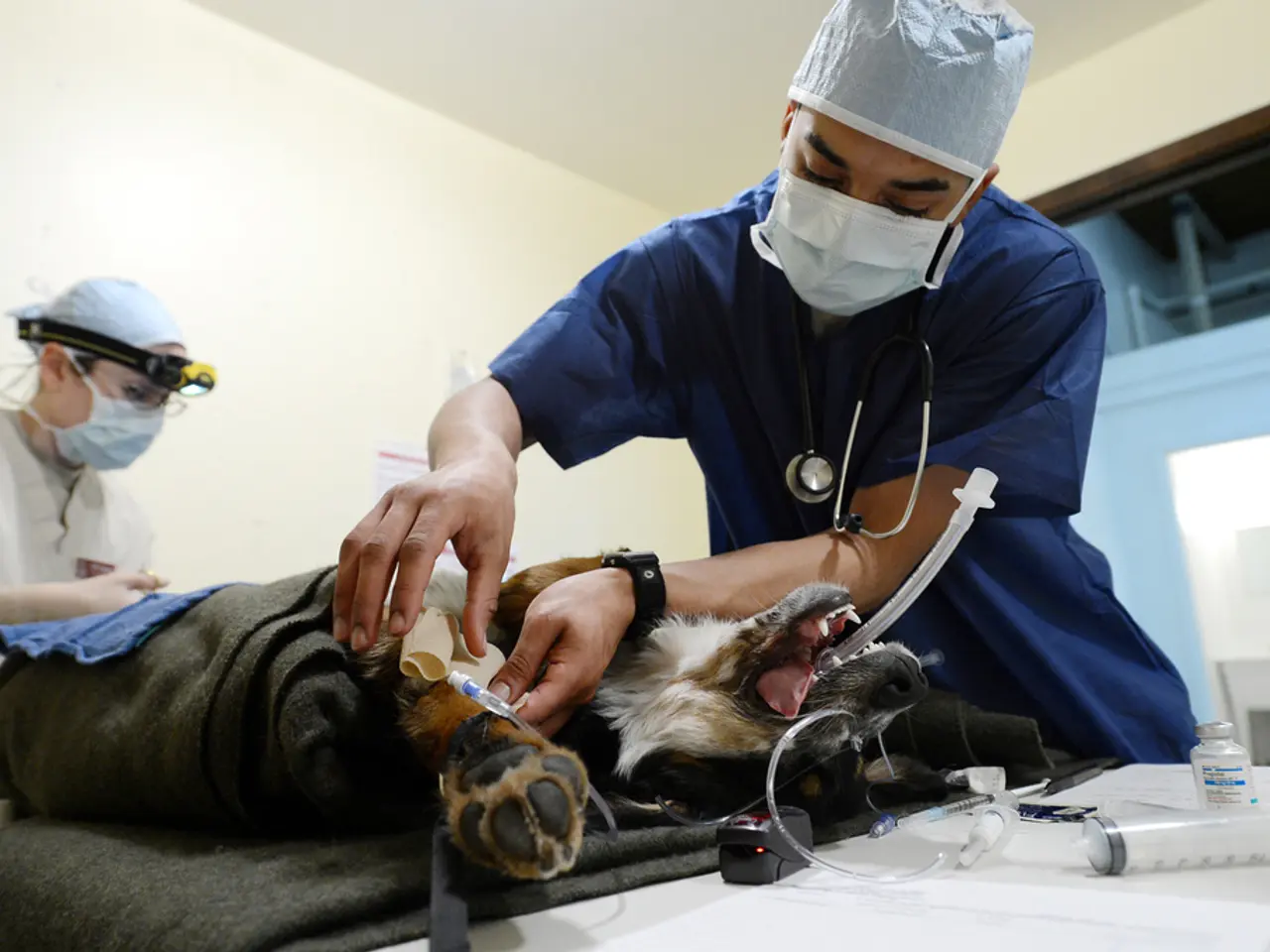Enhancing Sleep Quality through Atmospheric Pressure Adjustments
In the quest to manage sleep apnea, Continuous Positive Airway Pressure (CPAP) machines have emerged as a popular solution. These devices, invented by Australian doctor Colin Sullivan in 1980, work by pressurising the airway to prevent blockage during sleep. However, compliance with CPAP use remains a significant concern, with studies suggesting that 8% to 15% of people abandon the treatment after a single night, and 50% stop using it within their first year.
CPAP machines consist of a pump to provide pressurised air, a user interface for configuring settings, and may include humidification and heated tubing. Despite their effectiveness in providing a good night's rest for sleep apnea sufferers, common side effects associated with CPAP machines can contribute to suboptimal compliance.
Common side effects include aerophagia (swallowing air), causing bloating, burping, or gas; nasal issues such as congestion, runny nose, dry nose, nosebleeds, and crusting; dry mouth and dry eyes from mask leaks or improper mask fit; skin irritation and discomfort from the mask; claustrophobia or discomfort wearing the mask; and infections from bacteria, viruses, or allergens contaminating the mask or hose if not cleaned properly.
Regarding compliance issues, common challenges include discomfort wearing the mask, side effects like nasal congestion, dry mouth, or aerophagia reducing tolerance, psychological factors like claustrophobia impacting regular use, comorbid insomnia or other conditions predicting lower adherence, and poor compliance quickly reversing the benefits of therapy, returning symptoms after just a night or two without use.
To improve compliance, effective approaches include regular medical follow-ups, trying different mask types for better fit and comfort, using humidifiers to reduce dryness, pressure ramp features to ease adjustment, and patient education/support.
Addressing these side effects through medical guidance and equipment adjustments is key to improving adherence. It is crucial to remember that the benefits of CPAP treatment can significantly reduce sleepiness, blood pressure, and the prevalence of motor vehicle crashes in those with obstructive sleep apnea.
Despite the challenges, the benefits of CPAP machines are well-supported by the available scientific literature. Heavy snoring from sleeping partners is often what leads to a sleep apnea diagnosis, and the solution to sleep apnea is to stop the airway from becoming blocked, allowing normal breathing to continue. With the right approach and support, CPAP treatment can bring about a life-changing improvement in the quality of sleep and overall health for those suffering from sleep apnea.
- In the realm of health-and-wellness, addressing side effects like aerophagia, nasal congestion, dry mouth, and skin irritation from CPAP machines can enhance mental-health by improving compliance, allowing for a better quality of sleep and a reduction in sleep apnea symptoms.
- Scientific research highlights the significance of therapies-and-treatments like CPAP machines in managing sleep apnea, as they contribute to a good night's rest, lower sleepiness, and reduce the risk of motor vehicle crashes, despite the challenges in compliance.
- Improvement in CPAP machine compliance can be facilitated by adopting strategies such as regular medical follow-ups, using equipment like humidifiers, pressure ramp features, and patient education/support, all of which are supported by the available science.




